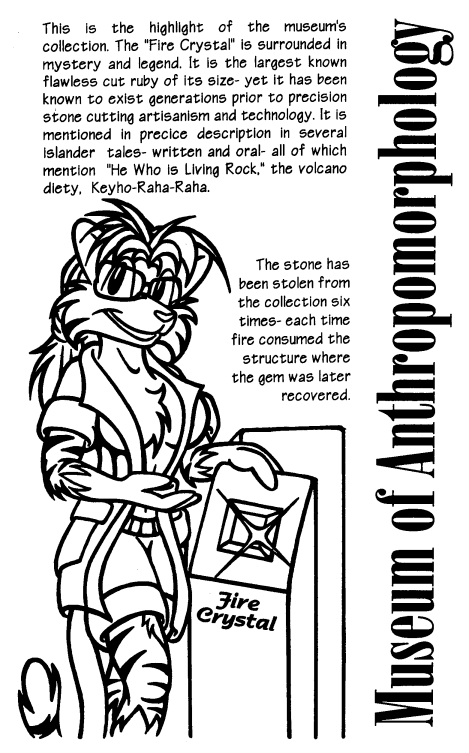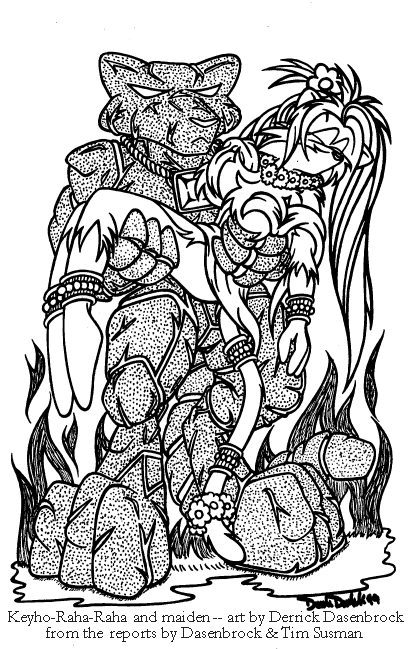Spontoon Island
home - contact - credits - new - links - history - maps - art - story
comic strips - editorial - souvenirs - Yahoo forum
Keyho-Ra-Ra
An anthropomorphological report
by
Tim Susman & Derek Dasenbrock

Keyho-Ra-Ra
An anthropomorphological report
by
Tim Susman & Derek Dasenbrock

| Fragments from a native tale- as
told by an old priest of a Spontoon Island village:
“…When the maiden was seated on the altar at the edge of the volcano, it was the priest’s job to stand by her and invoke the god of the volcano. This was a delicate matter requiring knowledge and timing, for if the priest left before completing the ritual, the god would not manifest, the sacrifice would be refused, and the god would become angry. If the priest stayed too long, he would be consumed in the firey rite along with the maiden.” “Having completed his ritual, the priest traveled down the mountain and waited at a point from which he could see the altar. If all went well, he would see a cloud of smoke, and then the glow from the volcano would brighten as the god made his way to the surface world. It was a short time before the god reached the altar.” “It is said Keyho-Raha-Raha is as one of our people, but taller by about two heads- and made of molten rock. Legends say that when he is in the volcano, he is as bright and red as the lava itself, but when he walks the surface world, his skin cools to a smoky black, which is why islanders with black fur are chosen as priests. His true nature always gleams through it, however, through cracks and fissures. He wears the ‘Fire Crystal’- glowing a crimson red, a symbol of his powers of Earth and Fire.” “He scooped the maiden up in his arms, always careful not to hurt her, and then in a moment he would be gone, and the priest would travel down to the village and assure them that the god was appeased for another year.” “Legend says that at the time of the last violent eruption, the god began on a great journey, and bestowed the Fire Crystal on his people (the islanders) for safekeeping. We await his return, when we will present it to him and the old days will be restored.” (circa 1897) Reported in writings from Susman and
Dasenbrock (’99)
|
